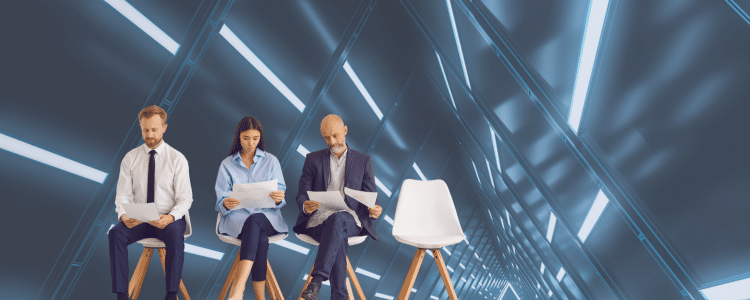According to one report, 47% of HR leaders believe the employee experience should be a company’s top priority. In fact, many HR leaders are investing in a range of new technologies to support this priority. This includes predictive analytics tools.
From employment reviews and onboarding reports to feedback surveys and recruiting insights, the HR department is replete with data it can use to make evidence-based decisions.
Today, we’re looking at the basics of predictive HR analytics so you can make more informed decisions during ERP selection.
Common Uses of Predictive HR Analytics
HR teams have long understood the power of data analytics to unlock key insights on employee and company performance. Traditionally, much of the focus has been on looking at past data to understand why things occurred the way they did.
For instance, they may have read employee exit surveys to learn the reasons why a worker left, or looked at job board data to see which types of candidates were engaging with their posts most frequently.
With predictive analytics, they’re still looking behind them. The main difference is they’re also looking ahead. By identifying patterns in past and present data, predictive analytics technology can foretell which types of events may happen down the road.
HR leaders can use these insights in a number of ways:
- Making strategic hiring decisions
- Anticipating skills gaps and shortages
- Reacting to major disruptive events
- Heading off employee turnover and retention
The core concept of HR analytics is that the past matters. Sometimes, looking back is the only way to notice hairline cracks in the foundation before they develop into chasms.
Let’s look at some of the benefits of implementing predictive HR reporting and analytics technology.
1. Breaking Old Patterns
Most HR teams will discover pain points, siloes, and inefficiencies as they dive deeper into the data. With these insights, they can improve their processes, and perhaps do business process reengineering throughout the HR department.
As they roll out these changes, the benefits will likely trickle down throughout the entire organization.
For example, predictive analytics in HR can help a company gauge how its recruiting and retention efforts are affecting attrition rates. Then, the company can determine what to do differently.
The 2025 ERP Report
72.6% of respondents said they've already deployed AI at their organizations. Learn about AI adoption and other ERP trends by downloading our latest report.
2. Smarter Hiring Practices
Most HR managers would agree that hiring is a central element of organizational growth. Yet, only 19% are prepared to address the current talent gap that’s affecting companies around the globe.
Years ago, human resources was responsible for meeting headcounts and making sure all current job openings were filled. Now, they’re taking on more of a business role, looking at ways to build out teams to meet present and future demands.
ERP software with predictive HR analytics functionality can help them get there. HR teams can create a profile of their ideal employee and use this to predict which recruits would best fit their needs. This requires assessing the skills and experience of past employees who have excelled at the organization and using it as a model going forward.
3. More Effective Retention
According to one survey, 48% of U.S. hiring managers are experiencing increased turnover at their companies.
In a competitive marketplace, top-tier talent is difficult to come by. This is why it’s so detrimental when that talent decides to go elsewhere.
Fortunately, predictive HR analytics can also help in this regard. Leaders can use data they’re already tracking to understand what makes an employee more of a flight risk.
This information is usually hiding in plain sight, in files such as:
- Employee engagement metrics
- Promotion timelines
- Performance review ratings
Once they identify which team members are poised to leave, HR can take measures to keep them on board. In the long run, this can help a company save significantly on tasks associated with hiring and training, as well as costly downtime.
Note: To avoid spotlighting anyone unfairly, it’s best to apply predictive attrition models to work groups, such as teams or departments.
What About Generative AI?
In addition to predictive analytics, HR teams are also turning to generative AI to help optimize their efforts.
In the HR field, generative AI has many promising functions, including:
- Writing more targeted job descriptions
- Customizing the applicant communication process
- Onboarding new workers
- Creating personalized maps for career development
Before diving into generative AI, it’s important to put protocols in place to protect against risks such as inherent bias and intellectual property concerns.
(Learn about AI in ERP.)
The Future of Predictive HR Analytics
Predictive HR analytics allows organizations to not only discern patterns and possible outcomes but use these insights to make business decisions.
Is your organization interested in leveraging predictive analytics to strengthen your HR efforts? Determining long-term strategies for your HR function will allow you to prepare for future needs while meeting current demands.
Contact our enterprise software consultants below to find out what software systems might provide the functionality you need for your HR initiatives.














